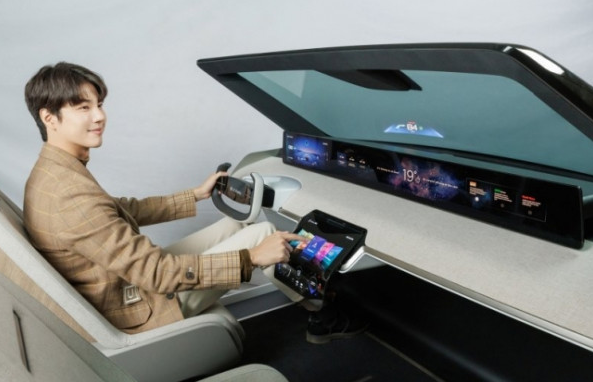
With the continuous advancement of technology, vehicle screen technology is evolving rapidly, and OLED technology has gradually become a new trend, replacing LCD technology. South Korean display companies are leading the way in this technological change, but Chinese competitors are catching up. Recently, market research firm Omdia conducted an analysis of global automotive OLED display panel shipments. Adjust the forecast. The initial forecast was 890,000 pieces, but it was quickly adjusted to 1.14 million pieces, and then revised to 1.48 million pieces. It is expected that shipments of automotive OLED panels will grow at an annual rate of 45% in the next few years. According to Omdia's forecast, global automotive OLED panel shipments will reach 5 million units by 2026, and this number will exceed 9 million units by 2027
 According to the editor’s understanding, although the automotive OLED panel market share is only 2.8%, most automotive displays still use LCD technology, accounting for 97.2% of the market share. However, with the popularization of autonomous driving technology and the improvement of in-vehicle entertainment functions, the demand for displays on vehicles continues to increase, and the requirements for display effects are also getting higher and higher. Therefore, more and more car companies are beginning to use OLED panels in high-end product lines. For example, Porsche plans to use 12-14-inch OLED panels in its models launched in 2024
According to the editor’s understanding, although the automotive OLED panel market share is only 2.8%, most automotive displays still use LCD technology, accounting for 97.2% of the market share. However, with the popularization of autonomous driving technology and the improvement of in-vehicle entertainment functions, the demand for displays on vehicles continues to increase, and the requirements for display effects are also getting higher and higher. Therefore, more and more car companies are beginning to use OLED panels in high-end product lines. For example, Porsche plans to use 12-14-inch OLED panels in its models launched in 2024
Currently, South Korea’s Samsung and LG dominate the global automotive OLED market, totaling The share is as high as 92.7%. The two companies were collectively called "K-Display" and became the market leader. Last year, LG Display accounted for 50% of the automotive OLED market, while Samsung Display accounted for 42.7%. Since 2019, LG Display has been the first company in the industry to achieve mass production and continues to lead the development of the automotive OLED market. At the same time, Samsung Display has continued to expand its influence and won recognition from famous car manufacturers such as Hyundai, Ferrari, BMW, and Audi. Rewrite the sentence: Currently, two Korean companies, Samsung and LG, dominate the global automotive OLED market, with a combined share of 92.7%. The two companies became known as "K-Display" and became market leaders. Last year, LG Display had a 50% share of the automotive OLED market, while Samsung Display had a 42.7% share. Since 2019, LG Display has been the first company to achieve mass production and continues to lead the development of the automotive OLED market. At the same time, Samsung Display has continued to expand its influence, winning recognition from well-known car manufacturers such as Hyundai, Ferrari, BMW, and Audi.
However, China is gradually expanding its share in the automotive OLED market. Although China's market share is still small in 2021, it increased rapidly to 7.1% last year. This shows that China's investment and development momentum in the automotive OLED field cannot be ignored. As China's investment in automotive OLED technology continues to increase, future market competition may become more intense
Overall, the development of automotive screen technology is undergoing a transition from LCD to OLED, which will not only provide The improvement in driving experience will also trigger a new round of competition in the global display market.
The above is the detailed content of OLED screens become mainstream contemporary automotive technology. For more information, please follow other related articles on the PHP Chinese website!




